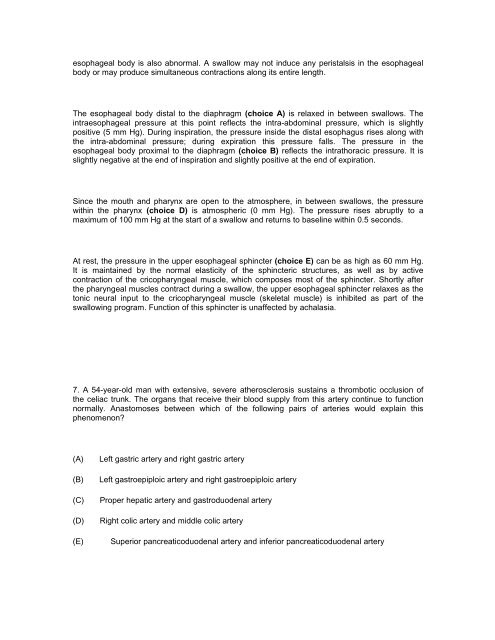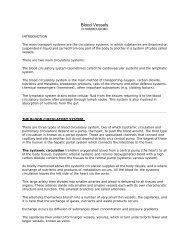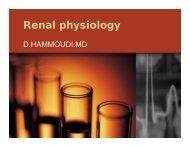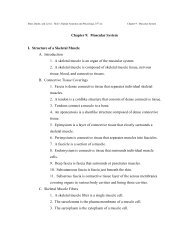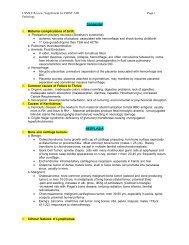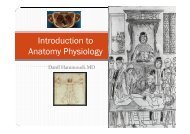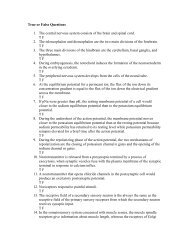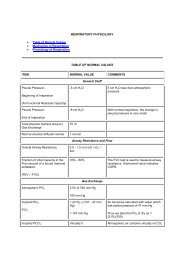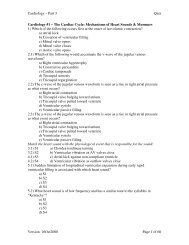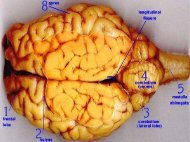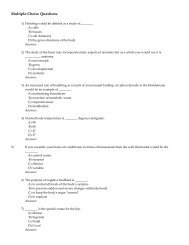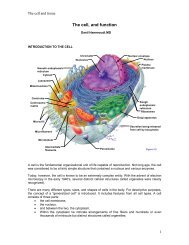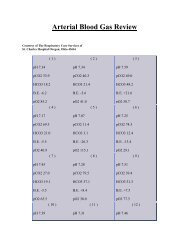L:\usmle review 7 - Sinoe medical homepage.
L:\usmle review 7 - Sinoe medical homepage.
L:\usmle review 7 - Sinoe medical homepage.
Create successful ePaper yourself
Turn your PDF publications into a flip-book with our unique Google optimized e-Paper software.
esophageal body is also abnormal. A swallow may not induce any peristalsis in the esophageal<br />
body or may produce simultaneous contractions along its entire length.<br />
The esophageal body distal to the diaphragm (choice A) is relaxed in between swallows. The<br />
intraesophageal pressure at this point reflects the intra-abdominal pressure, which is slightly<br />
positive (5 mm Hg). During inspiration, the pressure inside the distal esophagus rises along with<br />
the intra-abdominal pressure; during expiration this pressure falls. The pressure in the<br />
esophageal body proximal to the diaphragm (choice B) reflects the intrathoracic pressure. It is<br />
slightly negative at the end of inspiration and slightly positive at the end of expiration.<br />
Since the mouth and pharynx are open to the atmosphere, in between swallows, the pressure<br />
within the pharynx (choice D) is atmospheric (0 mm Hg). The pressure rises abruptly to a<br />
maximum of 100 mm Hg at the start of a swallow and returns to baseline within 0.5 seconds.<br />
At rest, the pressure in the upper esophageal sphincter (choice E) can be as high as 60 mm Hg.<br />
It is maintained by the normal elasticity of the sphincteric structures, as well as by active<br />
contraction of the cricopharyngeal muscle, which composes most of the sphincter. Shortly after<br />
the pharyngeal muscles contract during a swallow, the upper esophageal sphincter relaxes as the<br />
tonic neural input to the cricopharyngeal muscle (skeletal muscle) is inhibited as part of the<br />
swallowing program. Function of this sphincter is unaffected by achalasia.<br />
7. A 54-year-old man with extensive, severe atherosclerosis sustains a thrombotic occlusion of<br />
the celiac trunk. The organs that receive their blood supply from this artery continue to function<br />
normally. Anastomoses between which of the following pairs of arteries would explain this<br />
phenomenon<br />
(A)<br />
(B)<br />
(C)<br />
(D)<br />
(E)<br />
Left gastric artery and right gastric artery<br />
Left gastroepiploic artery and right gastroepiploic artery<br />
Proper hepatic artery and gastroduodenal artery<br />
Right colic artery and middle colic artery<br />
Superior pancreaticoduodenal artery and inferior pancreaticoduodenal artery


